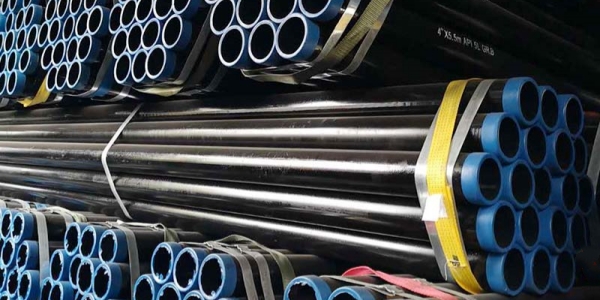When inspecting carbon steel seamless pipes, it's crucial to ensure that the pipes meet the required quality standards for the intended application. In this article, we will talk about some key inspection points for carbon steel seamless pipes.

Material Quality:
Check the material certificates to verify that the carbon steel used meets the specified standards and grades. Ensure compliance with material properties such as chemical composition, mechanical properties, and heat treatment.
Pipe Dimensions:
Measure and inspect the outer diameter (OD), wall thickness, and length of the seamless pipes to ensure they comply with the specified dimensional requirements. Use calipers, micrometers, and tape measures for accurate measurements.
Surface Finish:
Inspect the surface finish of the pipes for any defects, such as scratches, dents, or corrosion. The surface should be smooth and free from any irregularities that could affect performance.
Visual Inspection:
Conduct a visual inspection to check for any visible defects, including cracks, laminations, or other anomalies. Use proper lighting and inspection tools to thoroughly examine the external surface of the pipes.
Non-Destructive Testing (NDT):
Perform non-destructive testing methods such as ultrasonic testing, magnetic particle testing, or radiographic testing to identify internal defects or inconsistencies in the material. These tests are crucial for ensuring the integrity of the pipes.
Chemical Composition Analysis:
Verify the chemical composition of the carbon steel through laboratory testing. This is essential to confirm that the material properties align with the specified standards and grades.
Mechanical Properties Testing:
Conduct mechanical testing, including tensile, hardness, and impact tests, to ensure that the pipes meet the required strength and toughness properties.
Heat Number and Traceability:
Check that each pipe is marked with a unique heat number for traceability. This allows for tracking the manufacturing details and materials used in case of any issues or recalls.
Hydrostatic Testing:
Perform hydrostatic testing to assess the integrity of the pipes under pressure. This involves filling the pipes with water or another liquid to a specified pressure level and checking for any leaks or deformations.
End Configuration and Beveling:
Verify that the pipe ends are configured according to the specified requirements, whether plain ends, beveled ends, or threaded ends. Ensure that beveling is done correctly for welding applications.
Marking and Labeling:
Check for proper marking and labeling on the pipes, including size, grade, heat number, and any other relevant information. This information is crucial for correct installation and documentation.
Packaging and Protection:
Inspect the packaging to ensure that the pipes are adequately protected during transportation and storage. This includes protection against corrosion, impact, and other potential damage.

 English
English Español
Español




 Tel : +86-18565811709
Tel : +86-18565811709 Email :
Email : 

 News
News




